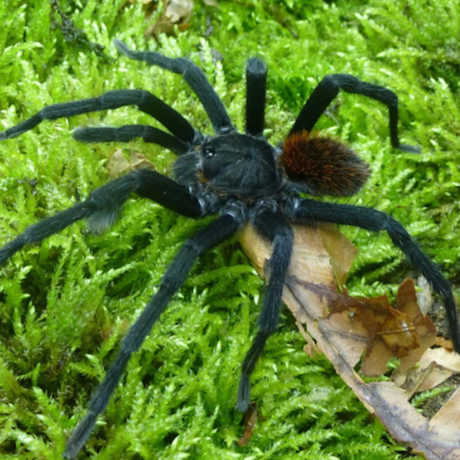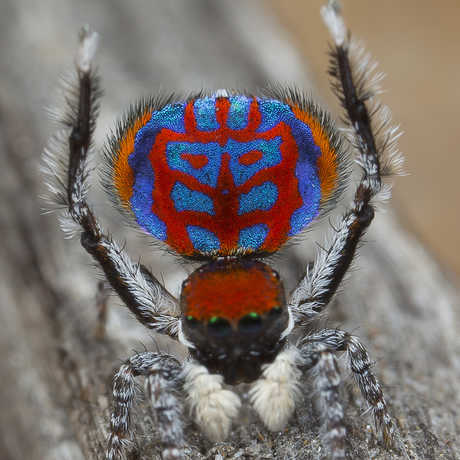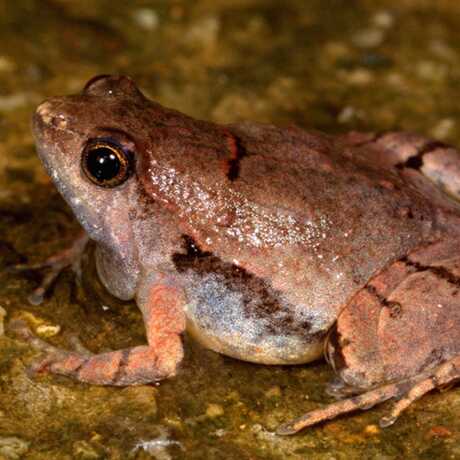Science News
New Discoveries: Creepy Crawlies

Welcome to New Discoveries, our biweekly series on new species publications. Remarkably, we still don’t understand or know a huge percentage of the life we share our planet with—some estimates say that 85% of life lies waiting for scientific discovery! With these posts, we hope to open your eyes to some of our new neighbors and inspire some exploration of your own.
This week, we share news of creepy crawlies—new spiders, a venomous snake, and four new bee species!
New Huntsman Spiders
When traveling through the desert on fine, hot sand, you might need something special on your feet. In the case of four new species of huntsman spiders living in southern Africa, it’s not shoes (four pairs!) but special hairs known as setae. In fact, setae are one of the attributes that set these spiders apart from their huntsman brethren, so much so that they are part of a new genus of spiders named May. The four new species, May bruno, M. ansie, M. rudy and M. norm, have long legs—8–10 centimeters (3–4 inches) long—with the setae at the bottom used somewhat like snowshoes. The “sandshoes” keep the spiders from sinking into the sand. The female spiders were discovered with bite marks on their arthropod necks, which could be part of a distinctive mating pattern. The discovery of these new specimens—collected from the desert and compared to museum collections—was published last month in African Invertebrates.
Death Adder Addition
If you’re looking for new species, the Kimberley region in Western Australia might be a great place to explore. A number of new species, including frogs, geckos, and lizards, have been discovered in the isolated area in the past few years. But be careful! In addition to the harmless herps, scientists have recently described a highly venomous death adder snake. These small ambush predators lure prey with their tails and are so similar to their cousins in the nearby Northern Territory that DNA testing was required to confirm the Kimberley death adder as its own species.
A-Buzz in Australia
Speaking of exploring in Australia, a huge project, called Bush Blitz, is undertaking the task of discovering and describing all of the life in Australia—where an estimated three-quarters of species remain unknown. According to its website, the project has already discovered close to 1,000 new species, including four new bees, published last week in ZooKeys. Scientists created a new genetic barcoding database to identify new species of bees and determine relationships among species.
According to the new paper, “Despite their environmental and economic importance as pollinators of native plants and as ecosystem services providers for crop pollination worldwide and in Australia, only an estimated two-thirds of the Australian bee species are as yet known to science,” so the database will continue to help scientists for a long time to come.
Three of the new bees belong to a group of bees that specialize on the flowers of emu-bushes. These bees have evolved slender faces and very long mouthparts to collect the nectar through a narrow constriction at the base of the flowers. The fourth species belongs to a different group within the same genus and has a normally shaped head. “It is hoped that this will stimulate native bee research,” says Katja Hogendoorn of the University of Adelaide. “With about 750 Australian bee species still undescribed and many groups in need of revision, there is an enormous job to do.”
An enormous job for scientists and science news outlets alike! Looking forward to many more new discoveries…
Image: Narrow face of the new bee species Euhesma aulaca, Remko Leijs
Rob Jackson is a professor of earth sciences at Stanford University. He travels the world for his job, from the rainforests of Peru to the deserts of South Africa and Patagonia.


